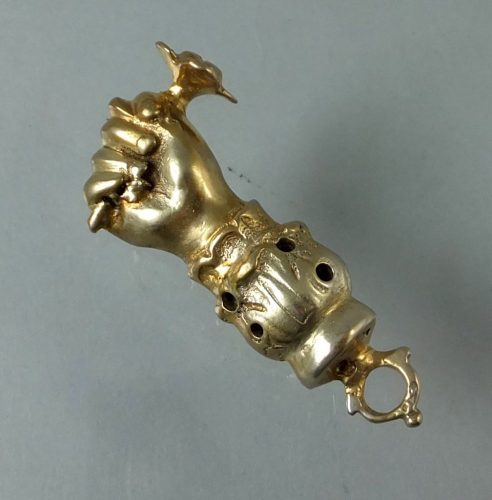Seventeenth century “Figa” pomander
Description
Seventeenth century silver gilt “FIGA” / pomander. The figa gesture together with a flower combined wuth a chamber for perfumed balsam is a very rare combination. Probably Italian ca 1660
Measurements : 60 mm
Weight : 22.8 gram
The specific symbolism that gave rise to the charm that we refer to as a Mano Figa originates in Etruscan Italy. Mano means hand and Figa means fig, a slang term for female genitalia. The gesture is undeniably a reference to heterosexual sex. In ancient times it was worn as an incantation to The Goddess, a call for fertility, virility and good times (the fig also has close ties to Bacchus). They were traditionally made of silver or blood coral, sacred elements for Luna, the goddess of the moon and Venus, the goddess of the sea, respectively.
Through time and colonization, the symbol crossed the oceans with Christianity, and beginning in the early 17th century figas began to be produced in South America. Now they are commonly worn throughout Brazil and Peru as a symbol of protection against the evil eye. The obscenity of the gesture is said to distract Satan from his conquest for your soul. Because of the close ties to femininity and motherhood it is traditional in Brazil to tie a tiny black figa to a child’s wrist to ward off bad luck.
If you wish to enquire about this item please click on the email link provided below to contact us
Contact Us

